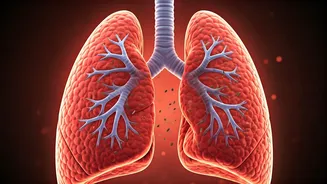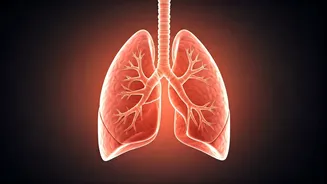The Invisible Threat
Air pollution poses a serious and growing challenge to public health, a reality often underestimated by many. Similar to how termites work unseen, air
pollutants, like tiny, harmful particles and gases, penetrate deep into our bodies. This silent invasion isn't immediately obvious, but it steadily impacts our health. Sources of this type of pollution are varied, including vehicle exhaust, industrial emissions, and even everyday activities like burning firewood. These elements combine to form a toxic mix that we unknowingly breathe, leading to both short-term problems and long-term, chronic conditions that can severely affect our lives. Recognizing this invisible danger is the first step toward safeguarding our health.
Breathing in Danger
The respiratory system is frequently the first and most seriously impacted by polluted air. Pollutants like particulate matter (PM2.5 and PM10), ozone, and nitrogen dioxide can trigger and exacerbate respiratory conditions. When we inhale these substances, they irritate and inflame the delicate tissues of the lungs and airways. For individuals with existing conditions such as asthma or chronic bronchitis, this can mean more frequent attacks and worsening symptoms. Prolonged exposure can lead to chronic respiratory diseases, diminishing lung function over time. The cumulative impact emphasizes the critical link between air quality and respiratory health. Protecting our lungs from pollution means taking proactive steps like using air purifiers and avoiding high-pollution areas.
Cardiovascular Consequences
Beyond the respiratory system, air pollution affects the cardiovascular system. Tiny particles, absorbed into the bloodstream, can trigger inflammation and oxidative stress, thereby leading to potential cardiovascular problems. This can include the narrowing of arteries, which increases blood pressure, and increasing the risk of heart attacks and strokes. Studies have shown a strong correlation between exposure to air pollution and an increased incidence of cardiovascular events. Furthermore, exposure to high levels of pollution increases the risk of irregular heart rhythms. This means that regular monitoring of air quality, and taking steps to reduce exposure, such as wearing a mask in heavily polluted areas, becomes critical for protecting heart health. Prevention can make a huge difference in the long run.
The Systemic Impact
The effects of air pollution are not limited to the respiratory and cardiovascular systems. The harm spreads throughout the body, with research suggesting links to other illnesses. For instance, air pollution has been implicated in increased risks of diabetes and certain cancers. The inflammatory response triggered by pollutants can disrupt various bodily functions, contributing to systemic health problems. Furthermore, some studies show a possible link between air pollution and cognitive decline, including an increased risk of dementia. As a result, air pollution is not an isolated risk; rather, it is a complex threat impacting multiple facets of our health. Effective management of this widespread risk requires a comprehensive approach, including policy changes, public awareness campaigns, and personal choices to minimize exposure.
Protecting Yourself Now
Given the multifaceted dangers of air pollution, proactive measures are key to safeguarding individual health. Simple strategies like checking daily air quality reports can help you make informed decisions about outdoor activities, avoiding peak pollution times. If air quality is poor, consider wearing an N95 mask to filter out harmful particles. Using an air purifier in your home can significantly improve indoor air quality, particularly in urban areas. Reducing your personal contribution to pollution by using public transport or cycling, instead of driving, is a valuable step. Support policies and initiatives aimed at improving air quality in your community and advocating for cleaner energy sources is also beneficial. By integrating these strategies into your daily life, you can reduce your exposure and mitigate the negative health consequences associated with air pollution.












